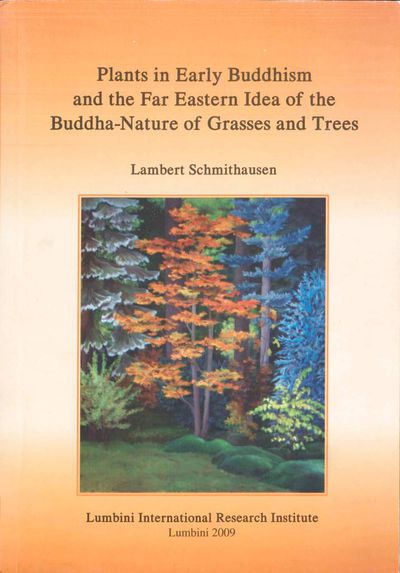Plants in Early Buddhism and the Far Eastern Idea of the Buddha-Nature of Grasses and Trees
< Books
| Line 60: | Line 60: | ||
**{{i|1.4. Plants Miraculously Transformed into Buddhas|290}} | **{{i|1.4. Plants Miraculously Transformed into Buddhas|290}} | ||
**{{i|1.5. Plants Becoming Buddhas|292}} | **{{i|1.5. Plants Becoming Buddhas|292}} | ||
| − | *{{i|2. New Aspects of the Buddha-Nature and Sentience of Plants in Japanese Buddhism|294}} | + | *{{i|2. New Aspects of the Buddha-Nature and Sentience of Plants in Japanese<br> Buddhism|294}} |
*{{i|3. The Question of Practical Consequences|308}} | *{{i|3. The Question of Practical Consequences|308}} | ||
*{{i|4. Résumé|322}} | *{{i|4. Résumé|322}} | ||
Latest revision as of 13:02, 21 May 2020
The present study has grown out of a lecture held in the winter term 2003-04, in which my aim was to present my view on the problem of the sentience of plants in early Buddhism to the participants of a series of lectures or various aspects of Buddhism, past and present, which were arranged by the Department of Indian and Tibetan Studies of the University of Hamburg over about a decade. (Source: Biblia Impex)
| Citation | Schmithausen, Lambert. Plants in Early Buddhism and the Far Eastern Idea of the Buddha-Nature of Grasses and Trees. Lumbini, Nepal: Lumbini International Research Institute, 2009. https://archive.org/details/earlyplantsinearlybuddhismfareasternideaofbuddhanatureofgrassestreeslambertschmithausensentinan_218_v/mode/2up. |
|---|---|

